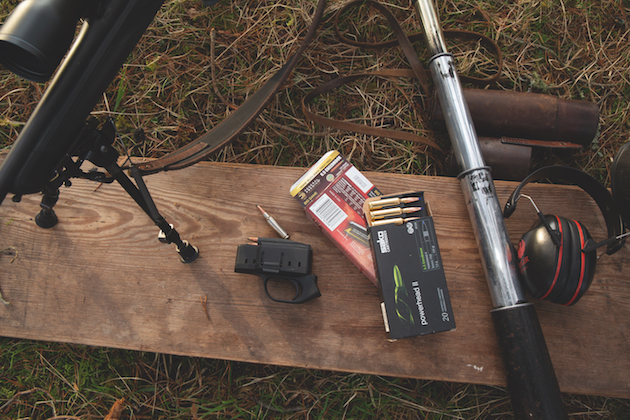What’s the accuracy of lead-free bullets?
Lead-free ammunition is definitely making its presence felt and I am increasingly hearing from readers who have concerns about lead-free…
Win CENS ProFlex DX5 earplugs worth £1,149 – enter here
 Usd 23 sept 20 Q&A
Usd 23 sept 20 Q&A
Oh, the joys of moving to non-lead rifle ammunition. No, I’m not being sarcastic. I had forgotten how much fun testing new ammunition can be. Especially when it goes well.
I have been trying out some new stuff for my 7mm-08 deer rifle. First, I searched the barn and found my old Chrony F1 chronograph. I worked out that it was last used about 18 years ago, when I used to home-load for my .30-06. On opening it and blowing out the dust, I found the remains of a battery that had died in unfortunate circumstances. With a new battery, the thing came alive and proved to be in full working order. Amazing.
I took it, with some paper targets, to the zeroing range I have set up in a gulley on the farm. The ammunition I was testing carries a Fox Classic Hunter bullet, designed and made in Slovenia. The complete rounds are factory-loaded in the UK by Edinburgh Rifles, which is, of course, based in Sturgeonia. The 7mm-08 brass cases are head-stamped RP, which I believe stands for Remington Peters, and are of good quality.
After an initial fouling shot, I proceeded to fire my first three-round group. I use three rounds rather than five because my rifle has a very light, fluted barrel that heats up easily. I’m after acceptable hunting accuracy, not fancy benchrest performance. Whenever I am tempted to believe my own PR, I am reminded of the time in Canada when I missed a moose. The bullet deflected on a spruce branch. Or, at least, that’s my story.
Anyway, I was startled when the first group came in at only half a minute-of-angle (MOA). Hallelujah. Further groups widened slightly as the barrel heated, but by no more than MOA. As for the velocity, the chronograph showed it averaging only 15fps slower than the manufacturer’s data. This is highly encouraging, because my rifle has a 19in barrel, whereas official test barrels tend to be at least 22in.
Lead-free ammunition is definitely making its presence felt and I am increasingly hearing from readers who have concerns about lead-free…
There is a growing push towards lead-free bullets. But what are the pros and cons of lead-free bullets? These are…
Investigating lead alternatives for deer The lead versus non-toxic debate is nothing new to those of us actively involved in…
The Fox Classic Hunter is made of monolithic copper/zinc alloy. My customary lead-based 7mm-08 ammunition uses a 140gr bullet, whereas the Fox, being made of less dense material, is 130gr. The barrel of my gun, having a relatively fast one-in-nine rifling twist, has no problem stabilising the Fox bullet. As for copper fouling, I haven’t noticed any. This might be due, in part, to the shank of the Fox bullet having driving bands, which reduce friction.
So, this particular rifle and ammunition combination works very well on paper. It is demonstrably more accurate than my normal factory lead load. But how will the new stuff work on deer? Fox bullets have a good reputation and I have no reason to suspect that they won’t expand properly at normal deerstalking distances. I simply want to see for myself.
While at Edinburgh Rifles, I was shown a box of .243 rounds they have loaded with Peregrine bullets. These come from South Africa, where they are machine-turned from copper, with brass ballistic tips. The .243 ammunition is awaiting proof certification. The key thing is that it has 100gr bullets and thus satisfies Scottish deer legislation. It might be worth a try for anybody worrying about the non-lead future of their .243.
Get the latest news delivered direct to your door
Discover the ultimate companion for field sports enthusiasts with Shooting Times & Country Magazine, the UK’s leading weekly publication that has been at the forefront of shooting culture since 1882. Subscribers gain access to expert tips, comprehensive gear reviews, seasonal advice and a vibrant community of like-minded shooters.
Save on shop price when you subscribe with weekly issues featuring in-depth articles on gundog training, exclusive member offers and access to the digital back issue library. A Shooting Times & Country subscription is more than a magazine, don’t just read about the countryside; immerse yourself in its most authoritative and engaging publication.

